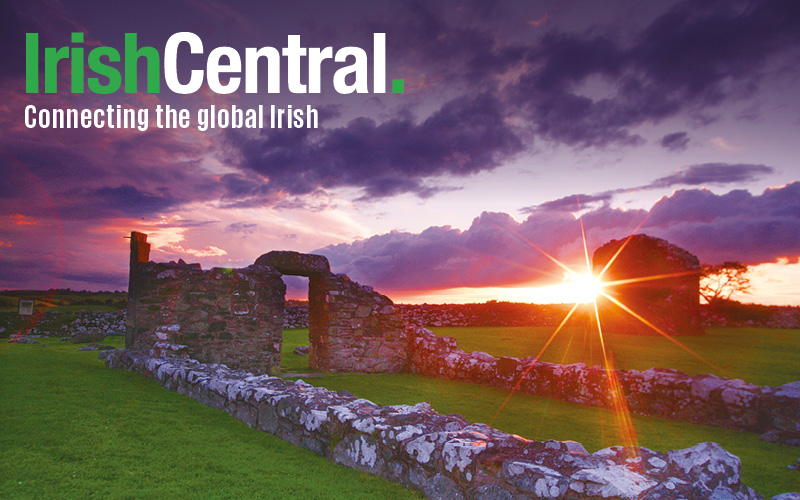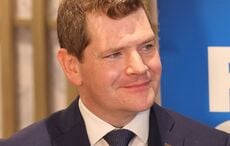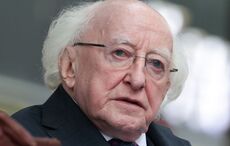Dublin: Prior to Enda Kenny's address to the annual Fine Gael party conference in the Citywest Hotel on the outskirts of Dublin there was speculation that he was planning to announce the date of the Irish general election. The rumors were so strong that, even before the speech, he made it clear this wasn't going to happen.
If he had gone ahead and named the day, it would have been an unwise move, causing great annoyance among his Labour partners in government. With Labour's annual gathering scheduled for the following weekend, such an announcement by the Taoiseach (Prime Minister) would have meant a major reduction in TV coverage of that event.
When an election is declared, strict rules of balance apply to the Irish broadcast media. Sinn Féin had already suffered in this regard. They were planning to hold their conference on the first weekend in February but were advised that, since the election campaign is likely to be officially under way by that stage, they would not get the TV coverage they would otherwise receive.
The most important part of that coverage is always the broadcast of the party leader's speech from 8.30 to 9 pm on the Saturday night. That's prime-time in TV terms of course and a great opportunity to get a political message across.
But the persistence of the misguided speculation that Kenny would go ahead and tell us the chosen date reflects the level of election fever gripping the Irish political class and news media at the moment.
Nor did he give any indication yesterday, following his meeting with Prime Minister David Cameron at 10 Downing Street, though he did share the news that he had extended an invitation for Cameron to attend the 1916 centenary celebrations.
For the election, the smart money is still on Friday, Feb 26, with the day before, Feb 25, and the first week in March not totally ruled out.
Pundits predict that Fine Gael will continue to be the largest party but with fewer seats than their present total of 67. My own estimate at present is that the party will lose about ten TDs.
As I write, I am looking at the cover of the program for their conference – or ardfheis ('ard-esh') – which carries the message, "Let's keep the recovery going." I have conducted a search through the scripts for the Taoiseach's two speeches to the ardfheis, which were emailed to journalists, and they contain the word "recovery" 41 times.
He asks voters if they want the recovery in the economy, which involved so much sacrifice on their part, now to be put at risk? There are two ways in which this could happen, according to the Fine Gael leader. Yes, you've guessed it, one is by voting for Fianna Fáil who, he claims, "wrecked the economy in the past." The other is by backing Sinn Féin, "whose populist promises would wreck our future by blowing a huge hole in the public finances."
It is traditional election rhetoric but after the votes have been counted, there will almost certainly be an insufficient number of Fine Gael TDs to give Kenny the minimum figure of 79 Dáil votes required to secure a further term as Taoiseach. So where will he get the extra support he needs?
Last time, there was no problem, as Labour had 37 TDs to supplement Fine Gael's 76 and the two parties swept into office on a wave of revulsion against Fianna Fáil, which was seen as having mismanaged the economy on a massive scale.
Currently Labour has 33 Deputies in the Dáil, but few believe they will return with anything close to that figure. Many observers believe that big Labour losses will be one of the major news stories on election day and that the party will be lucky to make double-figures.
In that situation there are two problems Kenny will potentially have to face. The first is that with, say, 57 Fine Gael TDs and perhaps ten from Labour, he will need to shop around for support from other quarters. The Independents and fringe parties, who will be present in abundance in the new Dáil, are obvious contenders in this respect.
It's a difficult but not daunting prospect for the leader of Fine Gael. Much more worrying, however, is the possibility that Labour, having been decimated at the ballot-box, might decide to stay out of government altogether, with a view to rebuilding their strength from the opposition benches. Past history suggests that Labour will not lightly turn down the opportunity of office, but it could happen on this occasion.
In that case, if Kenny wished to be re-elected Taoiseach, he might have to consider an unprecedented coalition with Fianna Fáíl, presuming that Micheál Martin's party was open to offers. Another, rather more remote possibility, would be an approach to Gerry Adams and Sinn Féin.
A grand alliance between the "Blueshirts" and the "Soldiers of Destiny" would be an historic development given the bitterness that marked the relationship between the two parties for many decades. But Fianna Fáil is in a difficult place. They have only 21 Dáil seats, 50 fewer than when the last general election was called. FF is expected now to improve considerably on their current total, but it will be a partial rather than total recovery.
Under the Irish system of proportional representation, vote transfers are very important. Voters can and do give their order of preference when filling out the ballot-paper. When a candidate is elected or eliminated, subsequent preferences of his or her supporters can help to get someone else past the winning-post.
Fianna Fáil will be hoping that their contenders get plenty of high transfers, particularly from supporters of Fine Gael and Sinn Féin. So far, Martin has ruled out coalition with either of the other two parties and this will probably help because, if he declared his intention of going in with FG, it would alienate SF supporters and vice-versa.
At the same time, it has left the party open to the charge that it is campaigning to remain in opposition and that people would be wasting their votes by supporting them. Naturally, Fianna Fáil would deny that, but the suspicion still lingers. Martin has accused Fine Gael of having hard-right policies on the economy while for a long time now he has excoriated Sinn Féín because of that party's history with the Provisional IRA.
As for Sinn Féín itself, the party that scored 9.9 percent of first-preference votes in the 2011 election is now getting close to double that figure in opinion polls. Currently in possession of 14 Dail seats, there is a good chance they will at least double that figure on this occasion.
What then for Adams & Co.? At their last national conference in Derry back in March, delegates voted to reject the prospect of joining a coalition that was led by either Fianna Fáil or Fine Gael. There was some small print in the motion that might conceivably allow for a situation where a left-wing alliance headed by Sinn Féin was the majority partner in such an arrangement. Even if FF or FG had more TDs in a set up of that kind, Gerry Adams and his friends could possibly still claim to be running the show.
Since Sinn Féin is already in office in the North, there is an argument that for the party to hold power in both parts of the island on the centenary of the 1916 Rising would be a major historic development. The question is what price the party would be willing to pay for such a deal, because coalition usually involves giving up some of your cherished policies to reach a compromise.
As for the far left, they are likely to do quite well in the election although the controversy over the imposition of water-charges on the public has considerably died down. The attendance at the latest protests was a good deal less than in former times and, despite a claim that there was a crowd of 20,000 in Dublin city center, it looked more like 2,000 to me. But the Government has suffered serious political damage all the same.
---
Deaglán de Bréadún's latest book is "Power Play: The Rise of Modern Sinn Féin", published by Merrion Press.




Comments